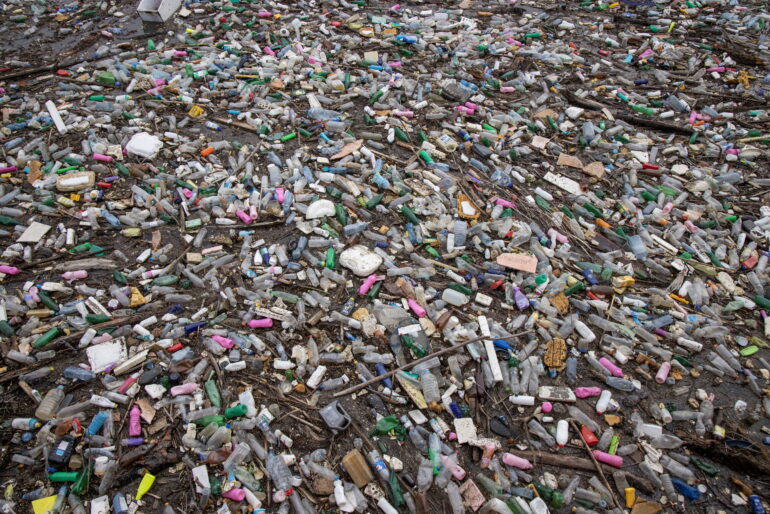Plastic litter in rivers might be allowing dangerous pathogens to hitch-hike downstream, a new study published Wednesday found.
The research, which focused on one UK river, found that dumped plastic, wooden sticks and the water itself were a breeding ground for communities of microorganisms, potentially providing a reservoir for bacteria and viruses known to cause human diseases and antibiotic resistance.
“Our findings indicate that plastics in freshwater bodies may contribute to the transport of potential pathogens and antibiotic resistance genes,” said lead author Vinko Zadjelovic of the University of Antofagasta in Chile.
“This could have indirect but significant implications for human health,” he told AFP.
Antibiotic resistance is a growing public health threat. In 2019, infections related to antibiotic resistance are estimated to have killed 2.7 million people worldwide.
By 2050 they are predicted to cause 10 million deaths worldwide, according to the study, published in the journal Microbiome.
When plastic ends up in water its surface is overrun within minutes by nearby microbes.
The researchers submerged samples for a week in the River Sowe in Warwickshire and West Midlands England, downstream from a wastewater treatment plant.
They found significant differences in the microbe communities depending on the material sampled.
Water worries
Wastewater is required to be treated and disinfected to reduce microbial hazards and any adverse impacts they might have on human and environmental health.
But the water samples that the researchers collected in February of 2020 harbored human pathogens such as Salmonella, Escheria most commonly known as E.Coli, and Streptococcus responsible for strep throat.
That underscores “the pressing need for stricter monitoring of wastewater treatment plants,” said Zadjelovic.
Meanwhile, the plastic and wood samples attracted “opportunistic” bacteria such as Pseudomonas aeruginosa and aeromonas, known to pose risk to people with compromised immune systems.
P.aeruginosa, which causes infections in hospital patients, was found to be nearly three times more abundant on “weathered plastic” that the researchers manipulated to resemble the way plastic breaks down in nature, when compared to the wood.
That weathered plastic also showed a greater abundance of the genes responsible for antibiotic resistance.
In recent months, British water companies have come under fire over the pumping of raw sewage into the UK’s waterways and the underreporting of pollution events, provoking widespread public anger.
Rivers are the main way plastic enters the world’s oceans, channeling anywhere between 3.5 thousand metric tons to 2.41 million metric tons of the manmade material to the sea annually.
More information:
Vinko Zadjelovic, Microbial hitchhikers harbouring antimicrobial‑resistance genes in the riverine plastisphere, Microbiome (2023). DOI: 10.1186/s40168-023-01662-3. www.biomedcentral.com/articles … 6/s40168-023-01662-3
2023 AFP
Citation:
Plastic waste in rivers may carry dangerous microbes: Study (2023, November 4)



